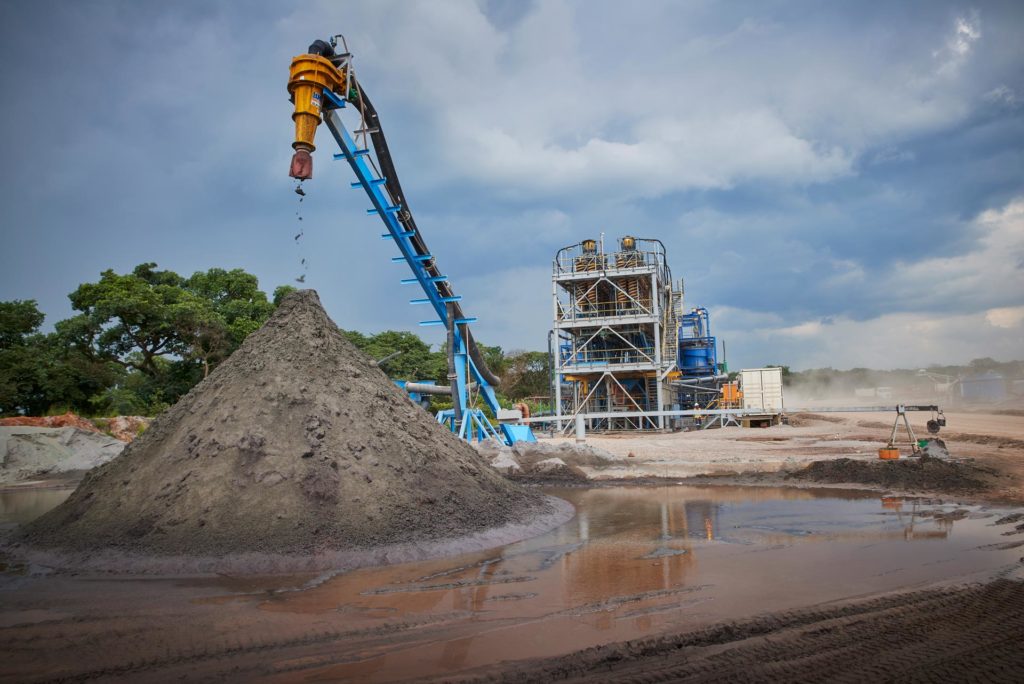Eurasian Resources Group (ERG) in Africa has broken ground on a hydrometallurgical plant at its COMIDE asset to produce copper and cobalt in the Democratic Republic of the Congo (DRC)
The plant is designed for phased operational output, with expansion potential to produce approximately 120,000 t/y of copper cathode and 15,000 t/y of cobalt hydroxide.
COMIDE comprises some of the largest known copper and cobalt resources still to be developed globally, according to ERG. Following a technical study, the development potential of its resource base and production capacity were established, paving the way for the project at hand. The COMIDE project includes the construction of a hydrometallurgical plant, an extensive exploration and drilling program, as well as mine development – backed by a total investment of around $800 million.
The start of works was marked by a groundbreaking ceremony held at COMIDE in Lualaba Province on October 12, 2023.
The hydrometallurgical plant, which is expected to be complete by the end of 2025, will be constructed in three phases. During the first and second phases, the plant will produce an estimated 40,000 t of copper cathode and 7,000 t of cobalt hydroxide annually. The third phase is projected to yield up to 80,000 t of copper cathode and 14,000 t of cobalt hydroxide per annum, with the potential for further expansion to reach a production capacity of 120,000 t of copper cathode a year.
Speaking on behalf of ERG Africa’s Acting Chief Executive Officer, Sergei Verbitckii, Chief of Staff, Joachim Nzuzi, stated: “The design of this project was developed with innovation and sustainability top of mind. The plant will be equipped with the latest technology to ensure that we maximise recovery, while reducing the impact on the environment.”
The ERG Clean Cobalt & Copper Framework – which guides production of these two critical minerals – will be extended to COMIDE.
Nzuzi added: “Aligned to ERG’s commitment to environmental stewardship, we are not only celebrating the building of a plant and the development of a mine today. We are also committing to a greener tomorrow, not only through our approach to responsible mining and producing the critical mineral required for the green energy transition, but also by restoring the ecosystems on our site and in the surrounding areas. Thus, before we have even started construction work, we teamed up with the University of Lubumbashi to establish a nursery that will provide the trees we will plant to ensure that after our mining activities eventually cease, the site will house many more trees than before we started the project. We already have 700 trees in our nursery and are currently seeding 2,000 more.”
During the development and construction phase of the project, COMIDE will provide approximately 2,000 direct and indirect jobs for DRC nationals, predominantly hired from its surrounding communities, ensuring that its community members will be the primary beneficiaries of COMIDE’s activities, while contributing to the broader economic upliftment of the country.
Once COMIDE becomes operational, with an estimated initial 20-year life of mine, its surrounding communities will stand to benefit through direct and indirect employment and supplier opportunities, the communities’ contribution fund and royalties towards social development initiatives, in addition to the projects outlined in its community development plan agreement [Cahier des Charges] and other social contribution initiatives contemplated to be developed in the context of the operation, ERG says.











